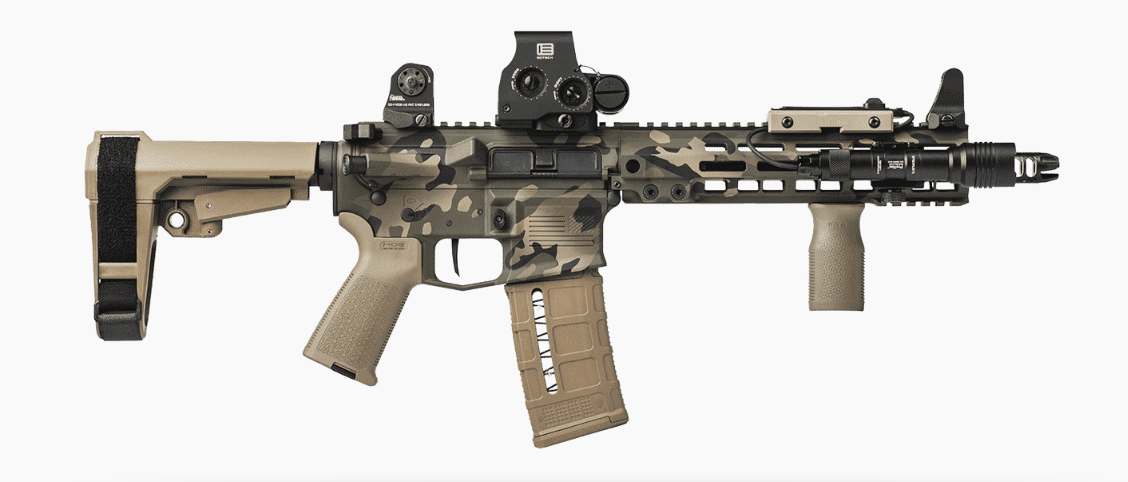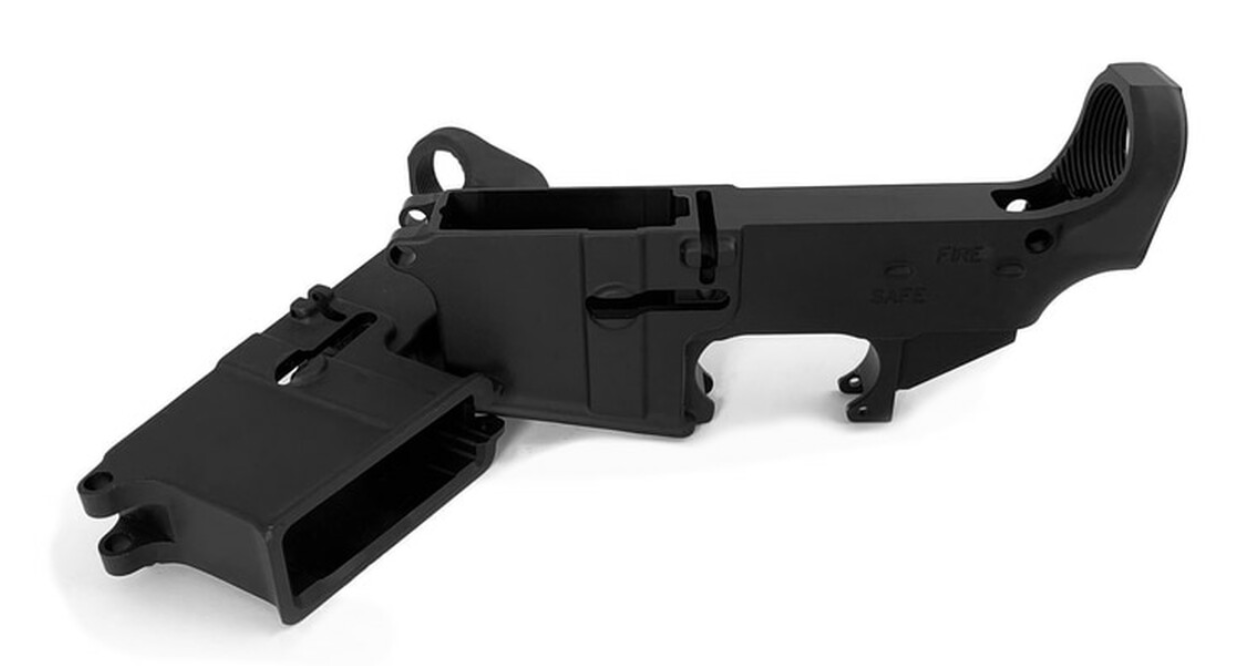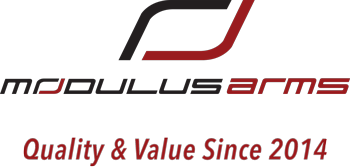Posted by Modulus Arms on 23rd Aug 2021
Anodize vs Cerakote: How To Protect Your AR-15
Anyone who’s been looking to buy an AR-15 for all of 5 seconds has probably had these two terms dropped on them without explanation, as if anyone who’s anyone should know. And while it might be pretty easy to figure out that they both coat a rifle, there is less explanation as to how the coatings differ, or even why selecting cerakote or anodizing is an important choice.
So what does ‘Cerakote’ vs ‘Anodized’ mean when it comes to your AR-15?
The short answer: They are both kinds of coating put onto a rifle’s outer components (and sometimes inner) to protect them from harsh conditions such as inclement weather, rocks, rust, and your truck’s bed. However, outside of general parts protection, the similarities end there.
So what are they exactly?
What is Cerakote?

Cerakote is essentially a paint compound made primarily of polymer and ceramic materials. It’s sprayed on, and then heated or “baked” to finish. Similar to normal ceramic coatings, Cerakote needs to be heated to an extremely high temperature in order for it to set properly. After all is said and done, you have one of the most versatile coatings that can be applied to firearms. Moreover, due to how thin the final coat ends up being, the chance of it screwing with your rifle’s tolerances is thankfully a non-issue.
The Upsides to Cerakoting
A Cerakote coating will always benefit the performance and longevity of whichever platform it’s on. One of the major benefits to AR-15s is that it greatly lessens the friction of parts that regularly interact with each other, like your bolt carrier group inside your upper receiver. This is thanks to the high natural lubricity of ceramic compounds, which are both very smooth, and also do a great job deflecting heat, which prevent lubrication from burning off. Cerakote is also fantastic at preventing rust and corrosion. Now, this tends to not be an issue as much with the AR-15 platform, as aluminum does not rust or corrode anyhow. Either way, Cerakote ultimately leaves you a durable and smooth running piece of equipment.
An additional benefit to Cerakoting is the room for personalization it leaves, as it can be made into any color or pattern you’d desire. It’s a super easy medium in which to make your custom builds really pop out with. Whether you’re looking for a plain color like Flat Dark Earth, a traditional camouflage like M81 or MultiCam, or something wilder, Cerakote is able to do it all.
What is Anodizing?

Anodizing is the process in which an oxidizable metal, such as aluminum, is treated in an acid bath with an electrical current. This process leaves a ‘coat’ that is integrated into the surface of the metal itself, and is very durable and wear-resistant. It’s almost like coating something with rust on purpose, but instead of forcing you to get a tetanus shot, it keeps your lower safe from harm.
Anodizing is one of the oldest, simplest, and most time-tested metal finishing processes, and on Aluminum, the surface actually becomes harder once it converts to Aluminum Oxide. While AR-15 lowers are almost always anodized in black, it is possible to anodize in other colors as well. The reason this isn’t commonly done, is because the colors are likely to have a lot of variance in anodizing, vs cerakote, where the color will always be exact.
Why Anodize?
There are also multiple levels to anodizing, however we are going to focus solely on ‘Type III’ Anodizing due to it being the military standard in terms of firearm coatings. Like Cerakote, Anodized lowers will protect the outside of your rifle from the elements and abuse from its owners alike without yielding any of its finish. The proof here is that anodizing is the military standard, and you’ll never be harder on your rifle than an 18 year Marine in Afghanistan.
While anodizing (vs cerakote), has significantly less customization, there’s always ways around that. Spray painting (or rattle canning) AR-15s has grown in popularity over the last few years, especially as the “cool guys” (read: Special Operations Units) overseas started doing so at the beginning of the GWOT. A rifle is a tool, so as long as you can blend it in to its environment, you’ve got all the cosmetics you need.
So Which is Better: Anodizing or Cerakoting?
In the cerakote vs anodize battle, you’re always going to have die-hards on either side of the line. The truth is that it doesn’t matter too much for the average shooter, and you should just go with what you like. While cerakoting (over anodizing) has some definite advantages like being slicker, dispersing heat better, and reducing IR signature (it’s not as bright under night vision), it’s not the end all-be all. Anodizing is cheaper, just as durable, and gives you a great mil-spec look. Plus, anodizing is still plenty durable, and we would be surprised if you ever needed anything tougher than that.
That being said, why not both? If you want a beater AR to give to your buddy who’s new to shooting, an Anodized lower would be perfect as a range-hand-me-down, and will easily take any abuse they would give it. Then, let them shoot your Cerakote AR to give them some gun-envy. Nothing wrong with a little showing off, right?

